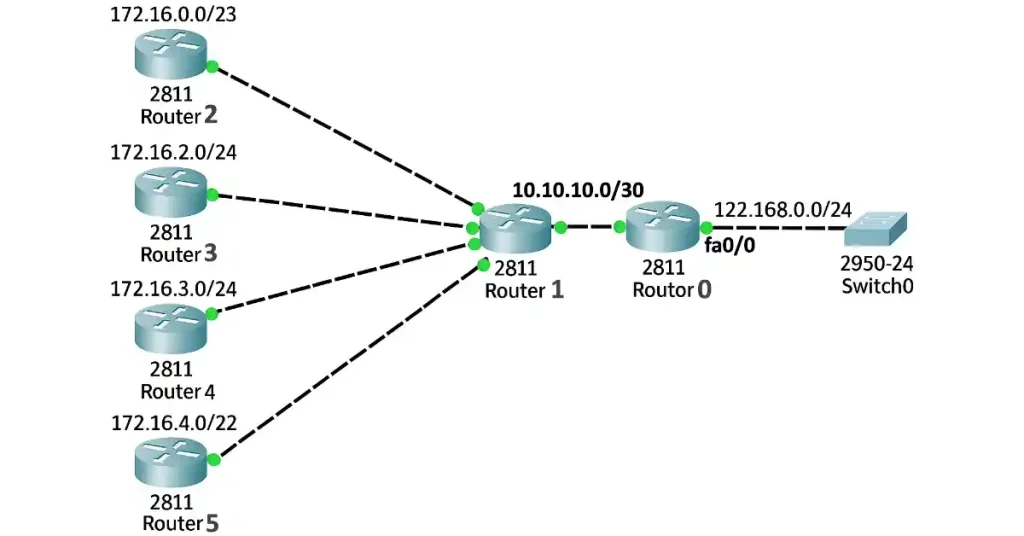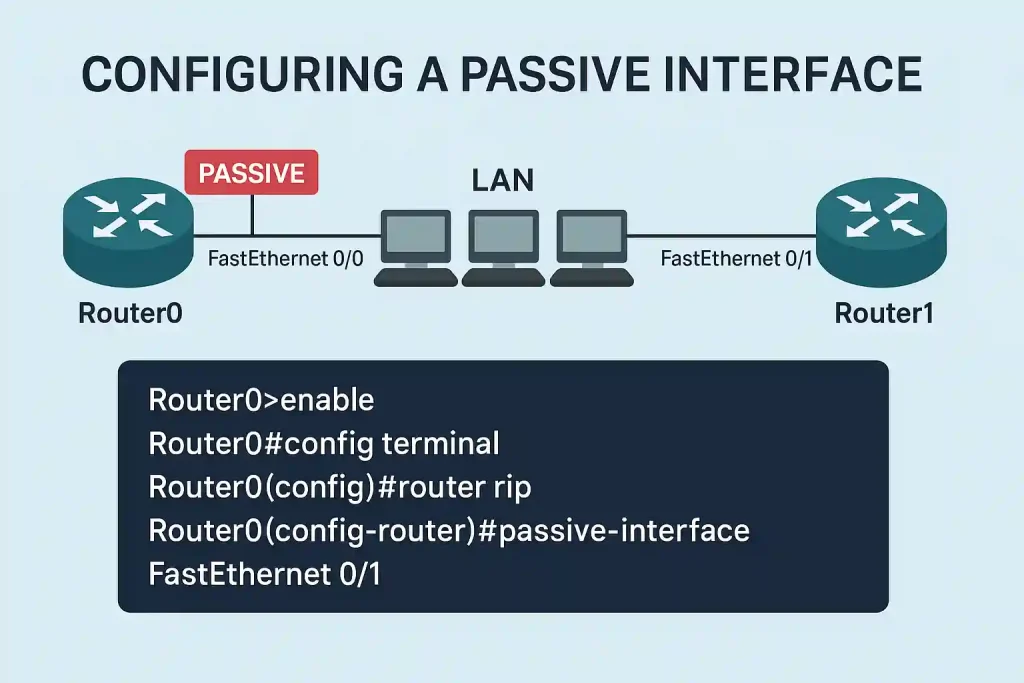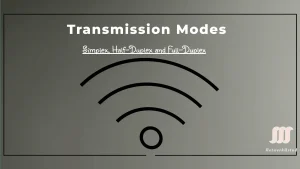By default, the Routing Information Protocol (RIP) sends routing table updates every 30 seconds on all enabled interfaces. In RIP version 1 (RIPv1), these are broadcasts to 255.255.255.255, while RIP version 2 (RIPv2) uses multicasts to 224.0.0.9. However, updates should only be sent on interfaces connected to other RIP-enabled routers to avoid unnecessary traffic. This requires configuring passive interfaces to suppress updates where they’re not needed.
The passive-interface command stops a router from sending RIP updates out of a specific interface, while still allowing it to receive and advertise routes learned from that interface in updates sent out other interfaces. This is crucial for LAN interfaces connected to end hosts, where no other routers are present.
Security Risks of RIP Updates
Advertising routing updates via broadcasts (RIPv1) or multicasts (RIPv2) poses a security risk. Attackers can use packet sniffers like Wireshark to intercept updates, learn your network topology, and potentially inject false routes to cause routing loops or blackholing. Passive interfaces reduce exposure on non-router links. For better security, enable RIPv2 with MD5 authentication using the key chain command.
Resource and Bandwidth Waste
Unnecessary RIP updates force all devices on the link (e.g., switches, hosts) to process broadcasts/multicasts, wasting CPU cycles and bandwidth. For instance, a full routing table update could consume 100-500 bytes per route, multiplied across large networks. Passive interfaces eliminate this overhead on LAN segments.
To address these issues, use the passive-interface command. It prevents sending updates out a specified interface but allows receiving them. Ideal for stub networks like LANs connected to end users, where no downstream routers exist.
Configuring Passive Interfaces
Referring to the reference topology, there is no need for Router0 to forward RIP updates to the LAN interface. However, Router0 is sending RIP updates to all computers on the LAN. We can verify this by enabling a debug on Router0 using the <debug ip rip> command in privileged exec mode. We can verify the interface passive configuration using the <show ip protocol> command.

So, we need to configure the Fast Ethernet 0/0 interface connected to the LAN as a passive interface. The process to configure the passive interface is as follows:
- Router0>enable
- Router0#config terminal
- Router0(config)#router rip
- Router0(config-router)#passive-interface FastEthernet 0/1
We can also configure the passive interface for all dynamic protocols. If we want to cancel the passive-interface configuration from any interface, we can use no passive-interface <interface-Id> command. We can also use the passive-interface default command to configure all interfaces as passive.
FAQs
What is a passive interface in Routing Information Protocol (RIP)?
A passive interface in RIP stops sending routing table updates on a specific interface, preventing broadcasts to devices like LAN computers. This enhances security, saves bandwidth, and reduces resource waste, configured with the ‘passive-interface’ command on Cisco routers.
Why should I configure a passive interface in RIP?
Configuring a passive interface prevents unnecessary RIP updates, reducing security risks from packet sniffing, minimizing bandwidth waste, and conserving device resources. It’s crucial for interfaces not need routing updates, like LAN connections.
How do I configure a passive interface on a Cisco router?
Enter ‘enable’, then ‘config terminal’. Use ‘router rip’ and ‘passive-interface FastEthernet 0/1’ to set the interface as passive. Verify with ‘show ip protocols’ or debug with ‘debug ip rip’. Use ‘no passive-interface’ to revert if needed.
What happens if I don’t use a passive interface in RIP?
Without a passive interface, RIP sends updates every 30 seconds to all interfaces, risking security breaches via packet sniffing, wasting bandwidth, and overloading network devices with unnecessary processing, especially on LANs.
Can I make all interfaces passive in RIP by default?
Yes, use the ‘passive-interface default’ command in RIP configuration mode to make all interfaces passive. You can then enable specific interfaces with ‘no passive-interface’ if updates are needed, offering flexible control.





